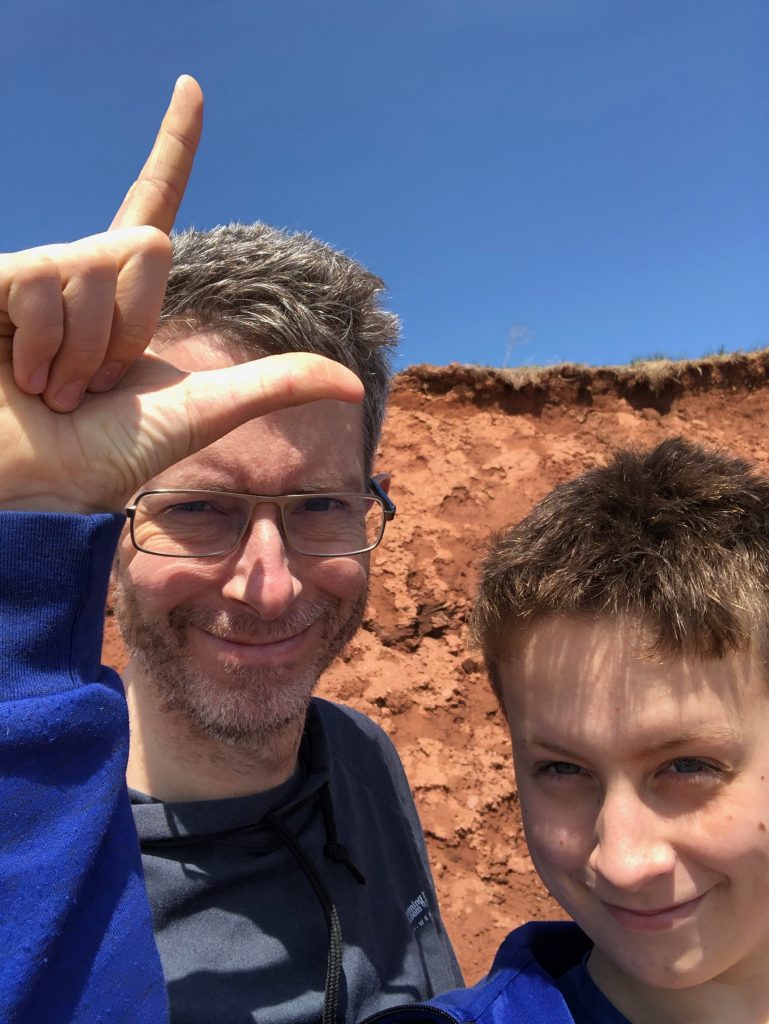“So prototyping is a great way to go through your life because nobody knows the answer”
My first year on Prince Edward Island is coming to a close and it’s time to make some decisions as to what to do going forward – leaving has even been discussed. It’s spring and change is in the air.
I have come to loathe any kind of self-help advice and feel that for the most part change does not come from an online “guru” or in the pages of a book, but from deep within. I feel somewhat the same towards productivity methods, which used to be in vogue, and after studying most have come to realize that no tool or technique is going to remove the dissonance you feel from having to finish some aggravating task, so you can click a check button.
The best advice I have ever received has been deceptively simple, and likely means nothing to anyone but myself. My trumpet teacher would always advise to ignore the problem, in this case a consistently missed note, and focus on (a correct) process. My mother would simply say when I faced a problem, everything will work out in the end. She wisely kept the part as to whether the result would be positive or negative ambiguous, thereby assuring that she was indeed correct. I believe it was in an email conversation that John Maeda advised me that when facing two possible paths, choose both. I’ve since realized that doing everything is only possible for people like John Maeda.
Lately I have been faced with some hard choices. My technique to date would seem to be let the problem rest and the solution will emerge.
I have in part been doing the following:
Instead of long-term plans or goals for the future that can shut us off from what is happening right now, Tim Minchin advocates for the ‘passionate dedication to the pursuit of short-term goals’.
‘Be micro-ambitious,’ he says. ‘Put your head down and work with pride on whatever is in front of you … you never know where you might end up. Just be aware that the next worthy pursuit will probably appear in your periphery. Which is why you should be careful of long-term dreams.’
When you don’t know which step to take, a small step can allow you to see what new opportunities appear.
How to figure out your next step
Which I found by accident when admiring the websites aesthetic, which is more or less similar to mine.
Essentially I have been trying different things over the past year to see what might work (prototyping). But the problem has still been festering, so I sought out help from a fellow advisor at the StartUp Zone, thinking that her expertise might be able to help. But recently after reviewing some material on design thinking, inspired in part by a recent design meetup, and my own need to introduce the techniques to others, I realized that I have the skills needed to solve all of these human wicked problems – design thinking. When I introduce an agile UX process to people, which is very similar to design thinking processes, I often tell people that this is how I live my life, short iterative bursts with time for reflection in between. But somehow I forgot about this when needing to make decisions about what’s next.
When big decisions arise, rather than leaping into the unknown on a gut feeling or a guess, you can apply design thinking: ask questions, seek feedback, prototype yourself by undergoing relevant experiences and exposing your assumptions to reality. … What you should do with your life is probably the most wicked problem there is, but design thinking and prototyping allow us to make the most refined choices we can.
How to Make Better Life Decisions through Design Thinking and Prototyping
Dave Evans overviews this idea in his video, To Make Big Life Decisions, Use Design Thinking and Prototyping.
I don’t have any one resource that I have relied upon for learning about Design Thinking, it wasn’t talked about much in my circles until a couple years ago, but I have read The Ten Faces of Innovation, Service Design: From Insight to Implementation, Sketching User Experiences, and Change by Design. Many colleagues liked The Human-Centered Design Toolkit but I have only given it a cursory glance.
Over the course of our 12th month here I’ll be using with more vigour the various design thinking techniques – sticky notes et al – to try to come to a thoughtful answer to what changes in direction I will be making for the next coming year.













